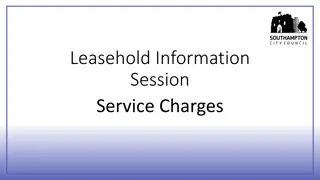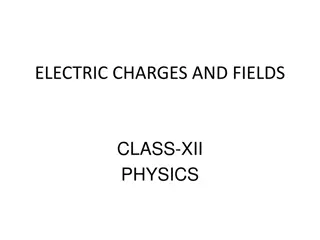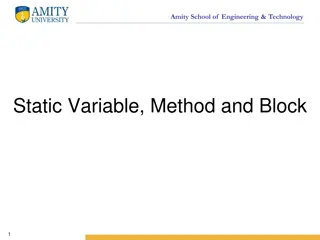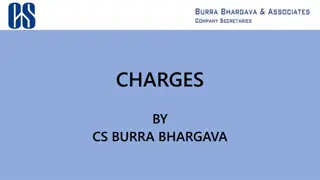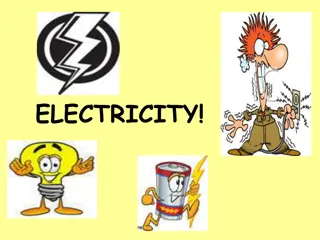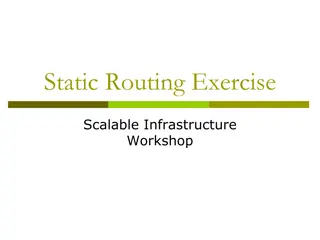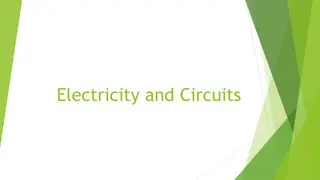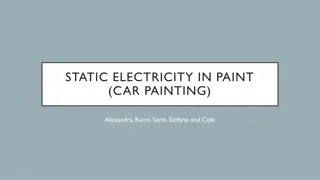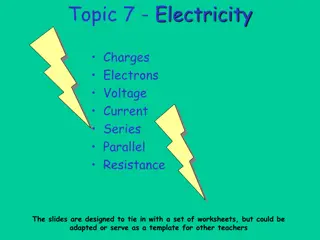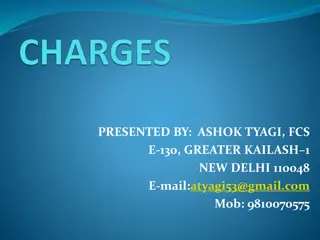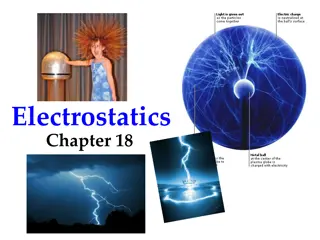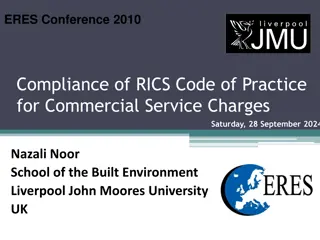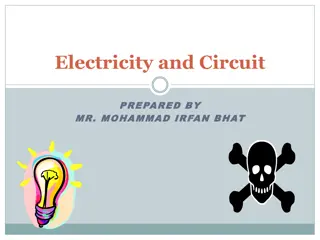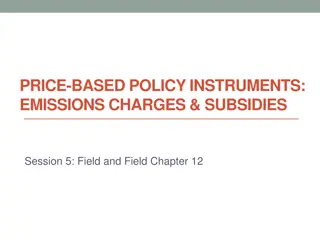Understanding Static Electricity: Two Kinds of Charges
Explore the concept of static electricity and the two types of charges - positive and negative - present in matter. Learn how charges can be separated through rubbing or pulling objects, leading to the buildup of static electricity. Unravel the properties of particles in matter and the significance of electric charge in this enlightening lesson.
Download Presentation

Please find below an Image/Link to download the presentation.
The content on the website is provided AS IS for your information and personal use only. It may not be sold, licensed, or shared on other websites without obtaining consent from the author. Download presentation by click this link. If you encounter any issues during the download, it is possible that the publisher has removed the file from their server.
E N D
Presentation Transcript
Lesson 1: Static Electricity - pages 174 - 185 ELECTRICITY AND ELECTRICITY AND MAGNETISM MAGNETISM CHAPTER 4 CHAPTER 4
Two Kinds of Charges Two Kinds of Charges Read pages 174 - 179 Matter is made of particles that have __________ . Particles of matter also have a property called A particle s charge can be: Matter in an object normally has a(n) number of positive and negative charges. This is called being . ______ .
Two Kinds of Charges Two Kinds of Charges Read pages 174 - 179 Matter is made of particles that have mass and volume. Particles of matter also have a property called electric charge. A particle s charge can be: Positive (+) Negative (-) No charge at all Matter in an object normally has a(n) equal number of positive and negative charges. This is called being neutral.
Two Kinds of Charges Two Kinds of Charges Particles of matter can be moved from one object to another. One way this can be done is by the objects together. This causes negative particles to move from one object to another. This results in the number of positive charges in matter to be from the number of negative charges. This is called a A charge is a measure of the ___________. ________ _______ ______. This charge that stays on the object and does not move is called ___________________. What are the two types of charges in matter? ______
Two Kinds of Charges Two Kinds of Charges Particles of matter can be moved from one object to another. One way this can be done is by rubbing the objects together. This causes negative particles to move from one object to another. This results in the number of positive charges in matter to be different from the number of negative charges. This is called a charge. A charge is a measure of the different number of positive and negative particles. This charge that stays on the object and does not move is called static electricity. What are the two types of charges in matter? Negative and positive charges are two types of charges in matter.
Separating Charges Separating Charges Read pages 180 - 181 Most of the time objects do not have a charge. They are said to be charge of matter you must separate the positive and negative charges. You can do this by pulls negative objects off one object to another. Rubbing causes only . To change the . Rubbing to move this way. This is called a _________________________________
Separating Charges Separating Charges Read pages 180 - 181 Most of the time objects do not have a charge. They are said to be neutral. To change the charge of matter you must separate the positive and negative charges. You can do this by rubbing objects together. Rubbing pulls negative objects off one object to another. Rubbing causes only negative charges to move this way. This is called a static charge.
Separating Charges Separating Charges Examples of actions that cause negative charges to occur are: What kind of charges move to make a static charge? _________________________
Separating Charges Separating Charges Examples of actions that cause negative charges to occur are: Comb drying your hair Clothes drying in a dryer What kind of charges move to make a static charge? Negative charges make a static charge.
Electric Forces Electric Forces Read pages 182 - 183 When objects are charged, they have a push or pull on one another called an . An electric force causes two objects with to attract each other. (Attract: )
Electric Forces Electric Forces Read pages 182 - 183 When objects are charged they have a push or pull on one another called an electric force. An electric force causes two objects with opposite charge to attract each other. (Attract: pull toward each other )
Electric Forces Electric Forces An electric force causes two objects with the charges (same) to repel each other. (Repel: _) The space around matter where an electrical force occurs is called an What is an electric field? . ______________
Electric Forces Electric Forces An electric force causes two objects with the like charges (same) to repel each other. (Repel: to push away each other) The space around matter where an electrical force occurs is called an electrical field. What is an electric field? The space where electric forces occur around an object is an electric field.
Lesson Review 1. Draw and complete a graphic organizer to show how changes affect particles. An object with a negative charge is near an object with a positive charge - - - - the objects attract. 2. Write two sentences that tell what the lesson was mainly about. When the electric charges in matter separate, the matter can display electric behavior. The like charges repel, and unlike charges attract.
3. If you rub a balloon on a wool sweater, the balloon will stick to the wool. What causes this to happen? The balloon becomes charged. When the balloon is brought near the wool sweater, it repels similar charges and attracts opposite charges. The balloon is then attracted to the opposite charges.
4. Write a sentence that explains how charges cause static electricity.



